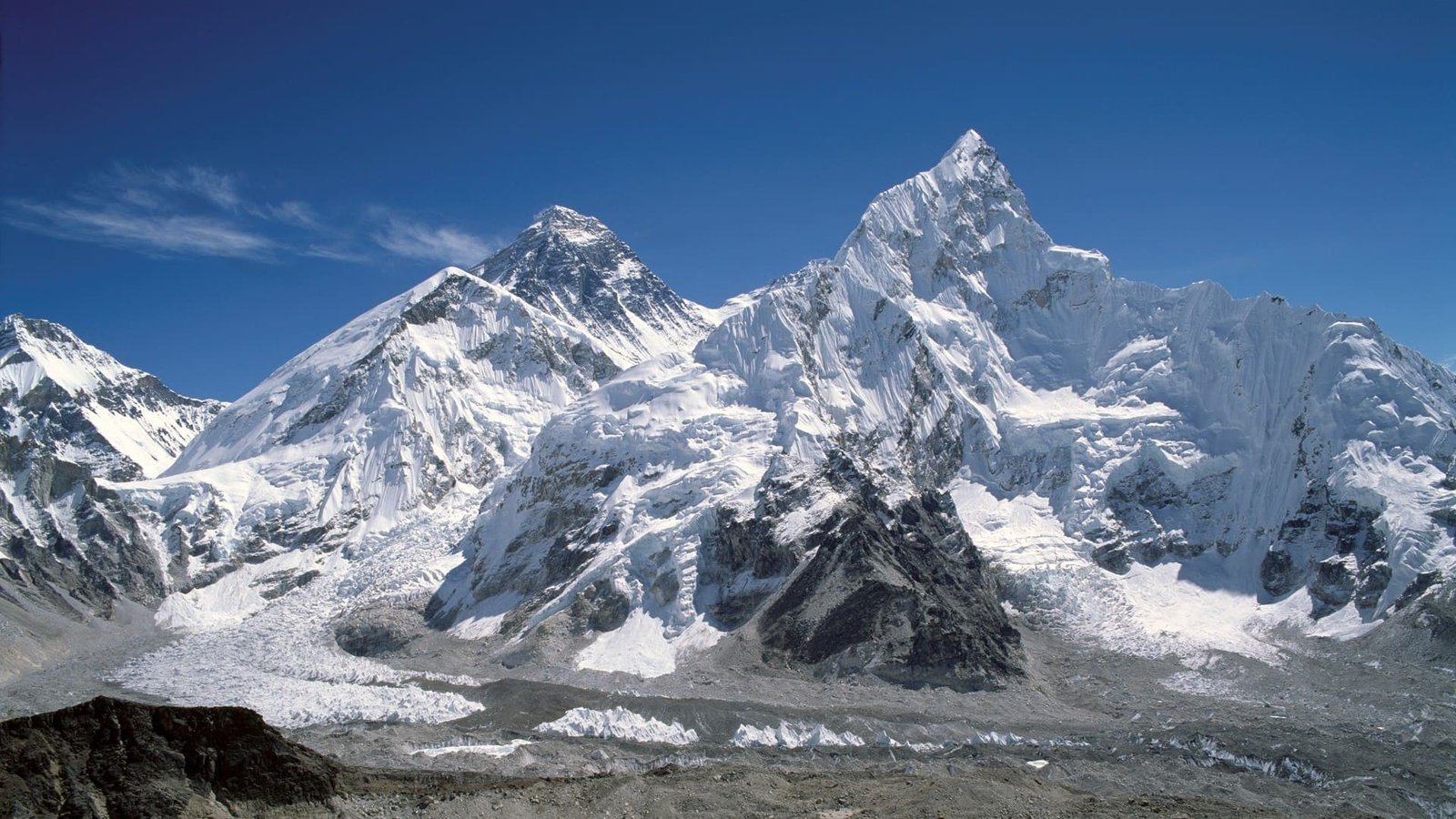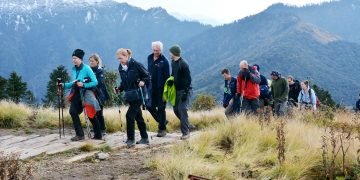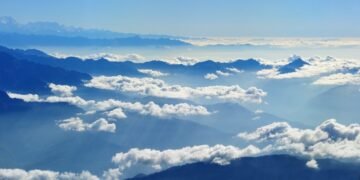Kathmandu, Nov 29: Seven Summit Treks, a prominent Kathmandu-based trekking and expedition company, will be organising Everest and Lhotse double header expedition on 12 April, 2024. As part of the high altitude expedition, experienced climbers looking to transcend life’s limits can join the venture of climbing the two peaks of 8000ers at a go. Particularly, the adventure journey is for those who have already gained the experiences of the ascent of 7000m peaks, said SST.
According to SST Chairperson Mingma Sherpa, the climb of Mt Everest and Mt Lhotse takes place via the Khumbu icefall up to S-Col (7890m). From there, the climbers will have the opportunity to make an additional ascent of the second peak after dealing with the first.
The Khumbu icefall is one of the most treacherous sections of the climb. Climbing through the route presents constantly shifting and crevassed icefall which makes it challenging to navigate. The route from the Everest Base Camp to the South Col involves cutting through several challenging sections including the Khumbu icefall.
“Our dedicated team is committed to ensuring a safe and successful climb for all climbers. Climbers will have experienced Sherpa guides, plenty of oxygen bottles, and a luxurious basecamp setup featuring dining and kitchen facilities in Camp I and Camp II. We will also provide backup oxygen, masks, regulators, and regular weather updates from MeteoSwiss,” he said. Anyone looking to have an experience of the ascent of both 8000ers peaks at the same time can sign up for the venture.
For further inquiries, one can reach out at info@sevensummittreks.com

Mt Everest
Standing tall at 8,848.86m (29,031.7 feet), Mt Everest is the world’s highest peak, located in the Mahalangur Himal of sub-range of the Himalayas on the border of Nepal and the Tibet Autonomous Region of China. So far, over 6000 people climbed the peak, and as of November, 2022, 310 climbers have died on it. The mountain is known by different names in different languages; it is called ‘Sagarmatha’ in Nepal, and ‘Chomolungma’ in Tibet. It got the name ‘Mount Everest’ given by the British in the 19th century in honour of Sir George Everest, then Surveyor General of India.
Sir Edmund Hillary of New Zealand and Tenzing Norgay Sherpa of Nepal were the first to stand atop the mountain. The feat was achieved on May 29, 1953 as part of a British expedition led by Colonel John Hunt.
The South Col and the North Col are two primary climbing routes on Everest with the South Col starting from Nepal being more popular.
Climbing the mountain involves extremely challenging and dangerous efforts due to its extreme altitude, harsh weather conditions, crevasses and avalanches. Climbing requires careful planning, physical and mental fitness, and mountaineering skills. The elevation of above 8,000m on the mountain is known as the ‘Death Zone’ due to thin air making it extremely challenging for the human body to function. Climbers face increased risk of health problems including altitude sickness, and hypothermia.

Mt Lhotse
At an elevation of 8,516m (27,940 feet) above sea level, Lhotse is the fourth highest mountain in the world after Everest (8,848.86m), K2 (8,611m) and Kanchenjunga (8,586m) located on the border of Nepal and the Tibet Autonomous Region of China.
The name Lhotse is derived from the Tibetan words ‘lho’, which stands for ‘south’ and ‘tse’ meaning ‘peak’. The peak is sometimes referred to as ‘Lhotse Shar’ to differentiate it from Lhotse Middle (8,414m) and Lhotse South (8,383m).
The mountain was first scaled on May 18, 1956 by a Swiss team of Ernst Reiss and Fritz Luchsinger. On May 12, 1999, Czech climber Sona Vomackova stood atop the main summit becoming the first woman to scale it without supplemental oxygen.
The normal route for climbing the mountain is the same route as Everest through the Khumbu icefall and the Western Cwm. It is connected to Mt Everest through the South Col and Mt Everest and Mt Lhotse share the same base camp for climbers.
Climbing Lhotse involves challenges including harsh weather conditions, altitude sickness, crevasses and technical difficulties. It requires careful planning, mountaineering experiences and skills, physical and mental fitness to navigate the challenges on the mountain.
—





















